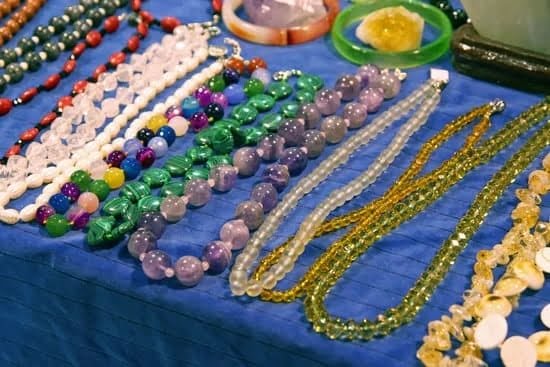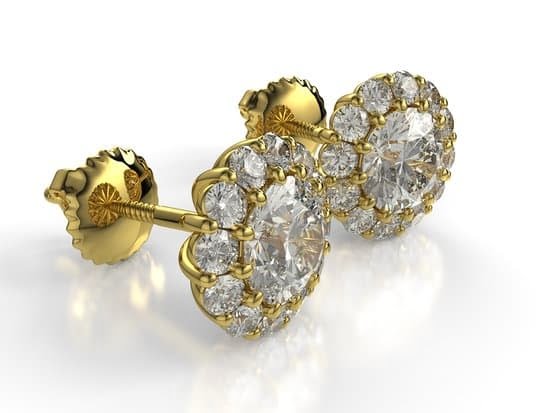Fine jewelry is a beautiful and timeless form of accessories that holds immense value and significance in the world of fashion. The art of creating fine jewelry requires precision, skill, and an eye for detail. From stunning necklaces to elegant rings, fine jewelry adds a touch of glamour to any ensemble.
Creating fine jewelry involves a meticulous process that starts with acquiring the right materials such as precious metals, gemstones, and tools. Design inspiration plays a crucial role in bringing the vision to life, and choosing the right techniques like wire wrapping, beading, and metalworking is essential for crafting exquisite pieces.
In this article, we will delve into the world of fine jewelry creation by exploring the materials needed, design inspirations, techniques employed, mastering the art of soldering and stone setting, finishing touches such as polishing and cleaning, as well as marketing and selling your creations. Additionally, we will provide tips on maintaining quality for longevity and customer satisfaction.
Whether you are a beginner looking to explore the art of jewelry making or an experienced designer seeking fresh insights, this comprehensive guide has something for everyone.
Materials Needed for Creating Fine Jewelry
Aspiring jewelry designers who are eager to learn how to create fine jewelry must first familiarize themselves with the essential materials and tools needed for this craft. Precious metals such as gold, silver, and platinum are commonly used in fine jewelry making due to their durability and ability to hold precious gemstones securely.
Gemstones, including diamonds, rubies, sapphires, and emeralds, add color and sparkle to the pieces. Additionally, a variety of tools such as pliers, cutters, files, and soldering equipment are necessary for shaping and assembling the jewelry.
When creating fine jewelry, it is important to carefully select high-quality materials to ensure the longevity and aesthetic appeal of the finished pieces. It’s crucial for designers to source their metals from reputable suppliers who provide certified purity levels. Similarly, gemstones should be ethically sourced and come with proper certification. Investing in top-quality tools will also ensure precision and efficiency in crafting fine jewelry.
In addition to acquiring the necessary materials and tools for creating fine jewelry, designers should also prioritize safety when working with these items. Proper ventilation is crucial when using chemical solutions for cleaning or patina processes. Eye protection should always be worn when using power tools or conducting any procedures that may generate debris or shards. By prioritizing safety precautions while working with these materials and tools, aspiring jewelry designers can create stunning pieces while protecting their well-being.
Design Inspiration
Exploring Your Creative Ideas Through Drawing and Sketching
One of the first steps in creating fine jewelry is to explore your creative ideas through drawing and sketching. This allows you to visualize and plan out the design of your piece before actually bringing it to life. Whether you prefer traditional pencil and paper or digital sketching tools, the important thing is to capture your vision on paper so that you can see how each element will come together in the finished jewelry.
Creating a Vision Board for Your Jewelry Designs
A vision board is a tool that many creative professionals use to gather inspiration and define the aesthetic of their projects. For fine jewelry designers, creating a vision board can involve gathering images of textures, colors, gemstones, and other elements that inspire your designs. By collecting these visual cues in one place, you can begin to see patterns emerging and refine your vision for the jewelry pieces you want to create.
Seeking Inspiration From Nature, Art, and Culture
In addition to drawing, sketching, and vision boarding, it’s important for aspiring jewelry designers to seek inspiration from various sources such as nature, art, and culture. From the intricate patterns found in natural formations to the bold statements made in contemporary art, there are countless sources of inspiration waiting to be explored.
By immersing yourself in different artistic disciplines and paying attention to the world around you, you can infuse your fine jewelry designs with unique creativity and personal flair.
By exploring design inspiration through drawing, sketching, and creating a vision board with elements ranging from personal sketches to images of textured materials or colorful gemstones; aspiring fine jewelry designers can develop their own unique artistic identity. Within this section we have covered the importance of visualizing design ideas on paper or digitally through sketches as well as utilizing vision boards for gathering inspiration.
Additionally we touched on seeking inspiration from nature, art, culture arts along with providing tips on how these starting points help define what sets apart an individual’s creations from others within this highly competitive field.
Choosing the Right Techniques
When it comes to creating fine jewelry, choosing the right techniques is crucial in determining the outcome of your piece. Whether you are a beginner or an experienced jewelry maker, understanding different techniques such as wire wrapping, beading, and metalworking can elevate the overall quality of your designs. Here are some key techniques to consider when creating fine jewelry:
1. Wire Wrapping: One of the most versatile techniques in jewelry making, wire wrapping involves using thin metal wire to create intricate designs and embellishments. This technique allows for endless possibilities in creating unique and custom pieces. To get started with wire wrapping, invest in high-quality wire in various metals such as sterling silver, gold-filled, and copper. With the right tools such as pliers and mandrels, you can begin experimenting with different wrapping styles and patterns.
2. Beading: Beading is another popular technique used in creating fine jewelry. From simple stringing to complex bead weaving, incorporating beads into your designs adds texture and color to your pieces. When using beads in your jewelry making process, consider factors such as size, shape, color, and material to achieve a cohesive look. Whether you prefer working with seed beads, gemstone beads, or Swarovski crystals, mastering various beading techniques will expand your design capabilities.
3. Metalworking: For those looking to create fine jewelry from scratch using precious metals such as gold or silver, metalworking is an essential technique to master. Metalworking involves processes like cutting, filing, soldering, and forming metal into desired shapes and structures. Understanding how to use jeweler’s saws, hammers, and torches is vital for manipulating metals effectively. By mastering metalworking techniques, you can create one-of-a-kind pieces that showcase intricate details and craftsmanship.
By honing these essential techniques – wire wrapping, beading, and metalworking – aspiring jewelry makers can take their creations to new heights while adding a personal touch to each piece.
Mastering the Art of Soldering and Stone Setting
Soldering is a crucial skill in creating fine jewelry, as it allows you to join metal components together securely. To master the art of soldering, it is essential to have the right tools and equipment. A jeweler’s torch, soldering pick, flux, and a heat-resistant surface are some of the basic tools needed for soldering. It is important to practice safety precautions when using a torch and to work in a well-ventilated area.
Stone Setting Techniques
Once the metal components are joined together through soldering, the next step is to set gemstones into the jewelry piece. There are various stone setting techniques such as prong, bezel, pave, and channel setting. Each technique requires precision and careful attention to detail to ensure that the gemstones are securely held in place.
Importance of Precision
When mastering the art of stone setting, precision is key. This involves using specialized tools such as a gemstone pusher, claw pusher, burnisher, and stone-setting burrs. The jewelry designer must have a steady hand and an eye for detail to ensure that each gemstone is set perfectly within the piece.
By mastering these techniques of soldering and stone setting, aspiring jewelry designers can create fine jewelry that not only showcases their craftsmanship but also highlights the beauty of gemstones and precious metals.
Finishing Touches
After all the hard work and creativity that goes into creating fine jewelry, it’s essential to give attention to the finishing touches. Polishing, cleaning, and quality checking are crucial steps in ensuring that your jewelry pieces stand out in terms of beauty and craftsmanship.
Here are some key steps in achieving a flawless finish for your fine jewelry:
- Polishing: Once the jewelry piece is assembled, polishing gives it that final shine. Use a polishing cloth or a polishing machine to bring out the luster of precious metals like gold and silver.
- Cleaning: Keeping your jewelry pieces clean is important for maintaining their beauty. Use a mild soap and warm water solution to gently clean gemstones and metal surfaces. For delicate gemstones, consider using a soft brush to remove any dirt or debris.
- Quality Checking: Before presenting your jewelry to the market, it’s crucial to thoroughly inspect each piece for any flaws or imperfections. Check for loose stones, scratches, or any other issues that may affect the overall quality of your jewelry.
Being meticulous with these finishing touches will not only enhance the aesthetic appeal of your fine jewelry but also ensure customer satisfaction and loyalty. As they say, the devil is in the details.
Aspiring jewelry designers can learn from professionals how to create fine jewelry by paying attention to these crucial finishing touches. A well-polished piece of fine jewelry that has been properly cleaned and quality checked will undoubtedly leave a lasting impression on its wearer. Learning how to master these skills will set you apart in the competitive world of fine jewelry design.
Marketing and Selling Your Fine Jewelry
The art of creating fine jewelry is a skill that requires precision, creativity, and attention to detail. Once you have honed your craft and produced stunning pieces, the next step is to market and sell your jewelry. There are several avenues through which you can showcase and sell your creations, ensuring that they reach the right audience.
Online platforms are a popular choice for selling fine jewelry due to their wide reach and accessibility. Websites like Etsy, Shopify, and Amazon Handmade are great options for setting up an online store. These platforms allow you to create a personalized storefront, upload high-quality images of your jewelry, and reach customers from around the world. Utilizing social media platforms like Instagram and Facebook can also help increase visibility and attract potential buyers.
Trade shows provide an excellent opportunity to showcase your fine jewelry to a targeted audience of industry professionals, buyers, and collectors. These events allow you to network with potential clients, establish valuable connections with other designers, and gain exposure in the industry. Make sure to have eye-catching displays and business cards readily available to make the most of this opportunity.
Boutiques offer a more intimate setting for selling fine jewelry. By partnering with local or specialized boutiques that align with your brand aesthetic, you can target a specific audience that appreciates handcrafted, one-of-a-kind pieces. This can also provide an opportunity for collaboration with boutique owners or designers for exclusive collections or custom pieces.
| Marketing Option | Description |
|---|---|
| Online Platforms | Websites like Etsy, Shopify & Amazon Handemade |
| Trade Shows | Showcase products showcasing networking & exposure |
| Boutiques | Partner with local/specialized stores for targeted sales opportunities |
Maintaining Quality
Creating fine jewelry is an art that requires skill, precision, and attention to detail. Once you have mastered the techniques of crafting beautiful pieces, it is essential to focus on maintaining quality to ensure longevity and customer satisfaction. Here are some tips to help you uphold the standard of your fine jewelry:
Firstly, it is crucial to use high-quality materials such as 18k gold, sterling silver, and genuine gemstones. Investing in top-notch materials will not only enhance the overall appearance of your jewelry but also contribute to its durability. Additionally, paying attention to the craftsmanship and finishing touches will set your jewelry apart and leave a lasting impression on customers.
Secondly, offering personalized customer service and taking the time to educate clients about proper care and maintenance of their fine jewelry can go a long way in ensuring customer satisfaction. Providing information on how to clean and store their pieces properly will help preserve the beauty of the jewelry over time, leading to happy and loyal customers.
Lastly, staying true to your brand’s values and consistently delivering exceptional products will establish a reputation for quality and reliability in the industry. Emphasizing ethical practices in sourcing materials and production processes can also contribute to customer trust and confidence in your brand.
| Maintaining Quality Tips | Description |
|---|---|
| Use High-Quality Materials | Investing in top-notch materials enhances appearance and durability. |
| Personalized Customer Service | Offering education on care and maintenance leads to satisfied customers. |
| Consistent Exceptional Products | Staying true to brand values builds a reputation for quality. |
Interview With a Professional Jewelry Designer
In conclusion, creating fine jewelry is a meticulous and artistic process that requires patience, creativity, and a keen eye for detail. By using precious metals, gemstones, and various tools, designers can bring their vision to life through drawing, sketching, and creating a vision board for inspiration. It’s important to choose the right techniques such as wire wrapping, beading, and metalworking to execute the design with precision and skill.
Mastering the art of soldering and stone setting is crucial in ensuring that each piece of jewelry is well-crafted and durable. The finishing touches of polishing, cleaning, and quality checking are essential steps in producing high-quality fine jewelry that will delight customers. Marketing and selling one’s creations can be done through online platforms, trade shows, or boutiques to reach a wider audience.
Additionally, maintaining the quality of fine jewelry is vital for customer satisfaction and longevity. Tips for keeping pieces in top condition should be provided to customers for their benefit.
Lastly, by learning from professional designers through interviews like those found in this article’s bonus section “Interview with a Professional Jewelry Designer: Insider Tips and Advice for Beginners,” aspiring creators can gain valuable insights into the industry and hone their craft even further. With dedication and hard work, anyone can learn how to create fine jewelry that is truly exceptional.
Frequently Asked Questions
What Do I Need to Make Fine Jewelry?
To make fine jewelry, you will need a range of tools and materials, including precious metals such as gold and silver, gemstones, specialized pliers, files, saws, and soldering equipment. Additionally, you will need a workspace with proper ventilation and safety equipment to work with these materials.
Developing design skills and knowledge of jewelry-making techniques is also essential for creating high-quality fine jewelry.
How Do I Start a Fine Jewelry Brand?
Starting a fine jewelry brand requires careful planning and consideration of various aspects. First, it’s important to develop a unique brand identity and aesthetic that sets your jewelry apart from others in the market. This may involve creating a distinct design style or focusing on ethical sourcing and sustainable practices.
Building a strong online presence through e-commerce platforms and social media is also crucial for reaching potential customers. Additionally, establishing relationships with suppliers, manufacturers, and retailers can help bring your fine jewelry brand to market.
How Do I Become a Fine Jewelry Maker?
Becoming a fine jewelry maker typically involves a combination of formal education and practical experience. Many successful jewelry makers complete programs at art or design schools to learn about the technical aspects of jewelry making as well as design principles.
Gaining hands-on experience through apprenticeships or internships with established jewelers can provide valuable insight into the industry and refine your skills. It’s also important to stay updated on current trends in fine jewelry design and manufacturing techniques to ensure that your work remains relevant in the market.

Welcome to my jewelry blog! My name is Sarah and I am the owner of this blog.
I love making jewelry and sharing my creations with others.
So whether you’re someone who loves wearing jewelry yourself or simply enjoys learning about it, be sure to check out my blog for insightful posts on everything related to this exciting topic!





